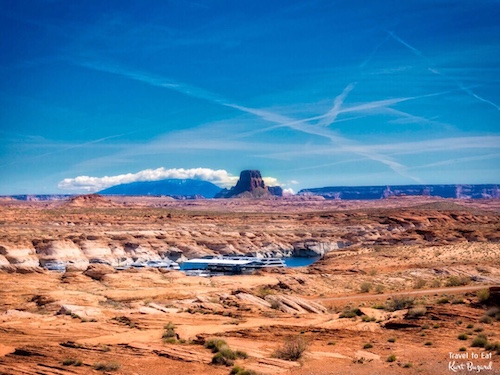
We decided to rent a motorboat from the Antelope Marina. Lake Powell was created by the flooding of Glen Canyon by the Glen Canyon Dam, which also led to the creation of Glen Canyon National Recreation Area, a popular summer destination. The reservoir is named for explorer John Wesley Powell, a one-armed American Civil War veteran who explored the river via three wooden boats in 1869. Glen Canyon was carved by differential erosion from the Colorado River over an estimated 5 million years. The Colorado Plateau, through which the canyon cuts, arose some 11 million years ago. Within that plateau lie layers of rock from over 300 million years ago to the relatively recent volcanic activity. Once the sea drained, windblown sand invaded the area, creating what is known as Wingate Sandstone.
Lake Powell
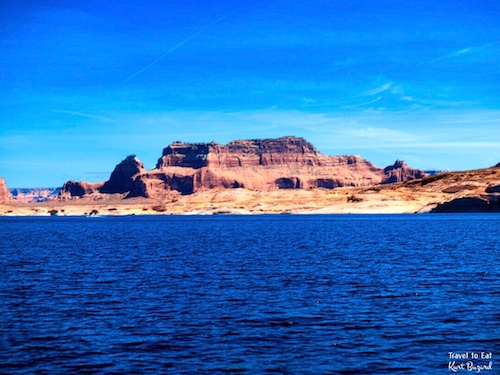
Navajo Canyon, the first turn to the right out of Antelope Marina, is a beautiful place, full of red sandstone and dark blue water. However, when the water becomes still, you can get some unforgettable photos.
Still Water in Navajo Canyon
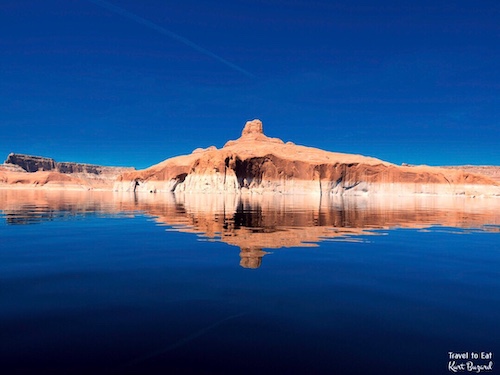
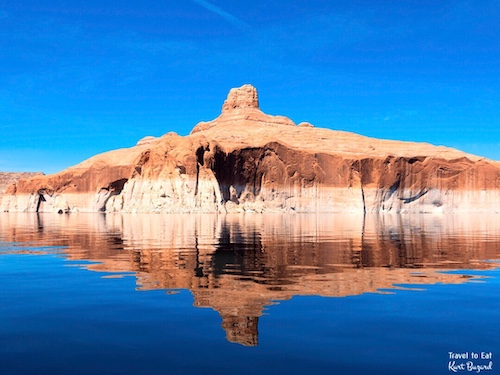
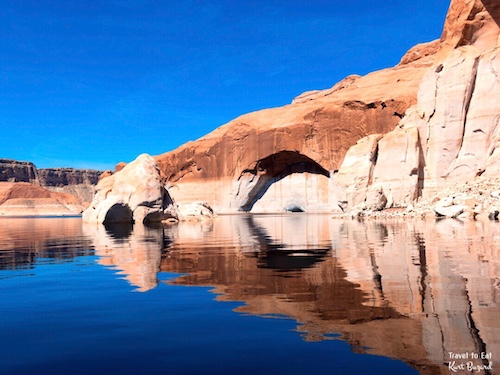
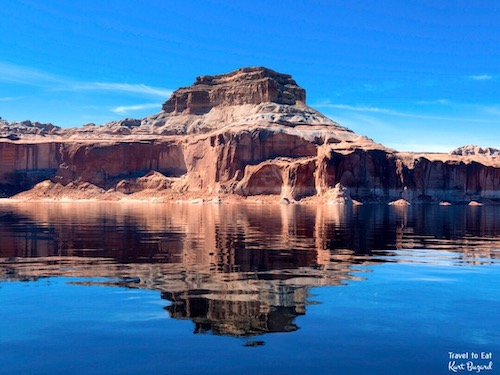
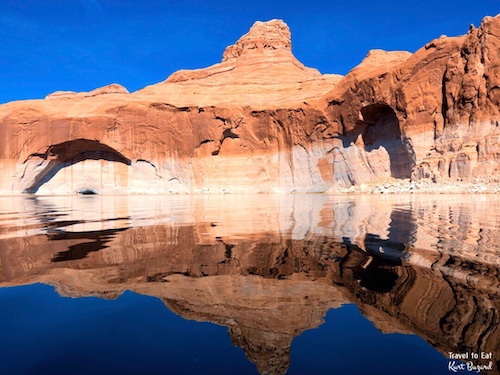
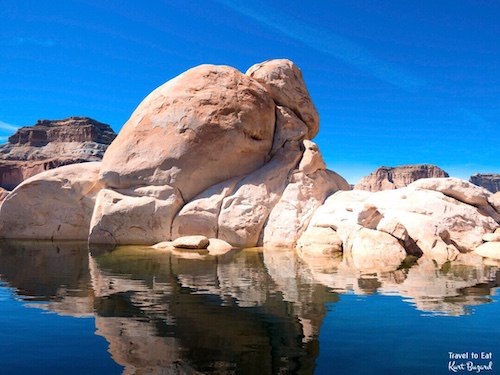
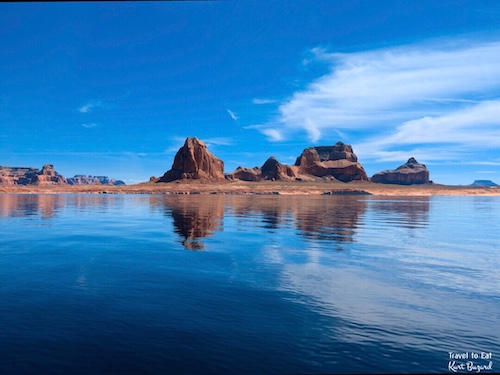
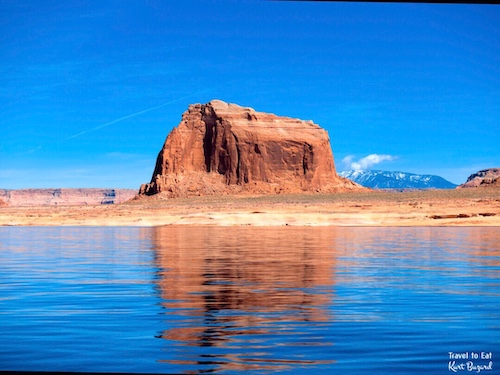
Navajo Canyon is the longest side canyon on Lake Powell that is not a river arm. One of the longest of Lake Powell’s 96 major side canyons, Navajo Canyon is also one of the only side canyons to have been a tributary of the Colorado River. The canyon twists and meanders 15.5 miles past 600′ high walls laden with Navajo Tapestries; iron oxide and manganese residue from the above, now eroded, beds of shale, that have “draped” down the sides of the canyon walls. This canyon is great for boating, hiking, kayaking and camping. When the water is still, without waves caused by motorboats or wind, the features are reflected in the water. Early in the morning and late at night are rhe best times. At the top of the canyon are the Chaol Canyon Falls. The left fork is Navajo Canyon and it goes on farther that a person can walk in a day. If looking for the Falls, then Chaol Canyon is a better bet.
Red Rock Fotmations
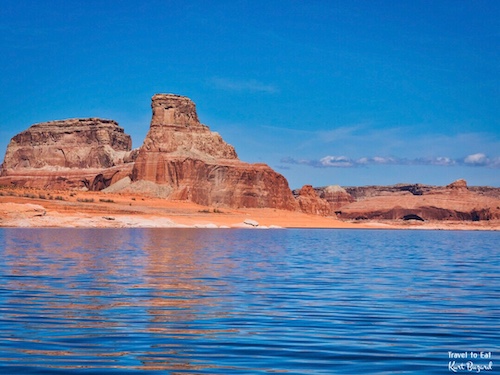
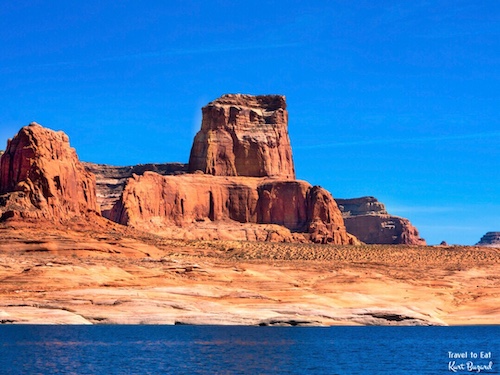
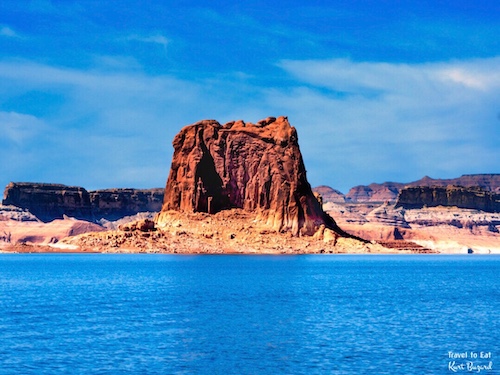
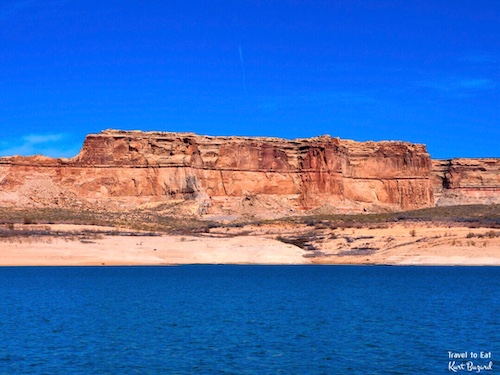
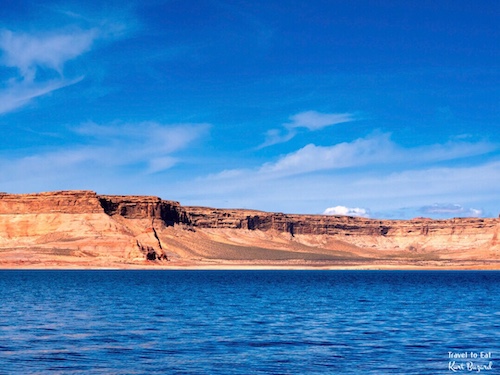
Lake Mead is the largest reservoir in the United States, measured by water capacity. It is on the Colorado River about 24 mi (39 km) from the Las Vegas Stripsoutheast of the city of Las Vegas, Nevada, in the states of Nevada and Arizona. Formed by the Hoover Dam, Lake Mead is 112 miles (180 km) long when the lake is full, has 759 miles (1,221 km) of shoreline, is 532 feet (162 m) at greatest depth, with a surface elevation of 1,221.4 feet (372.3 m) above sea level, and has 247 square miles (640 km2) of surface, and when filled to available capacity, 26.12 million acre feet (32.22 km3) of water. Lake Powell was created by the flooding of Glen Canyon by the Glen Canyon Dam, which also led to the creation of Glen Canyon National Recreation Area, a popular summer destination. The reservoir is named for explorer John Wesley Powell, a one-armed American Civil War veteran who explored the river via three wooden boats in 1869. As a compromise, all sides agreed instead to build a dam at a remote spot in southern Utah called Glen Canyon, in a region far from highways, about 200 miles northeast of Las Vegas. Glen Canyon Dam would help normalize the erratic flows of the Colorado and flood a land of barren sandstone domes and inaccessible dendritic canyons, transforming them into a surreal oasis called Lake Powell.
Pelicans and Coots
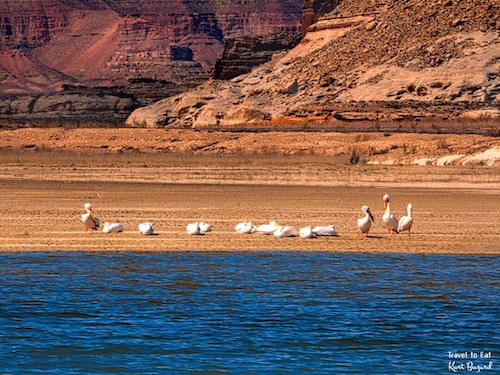
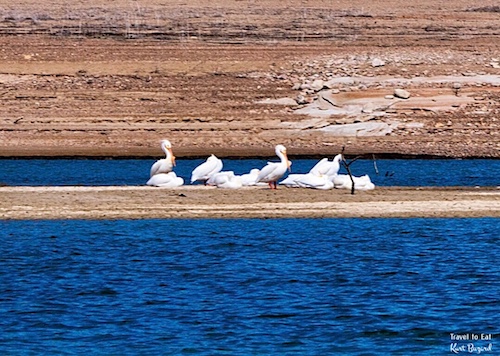
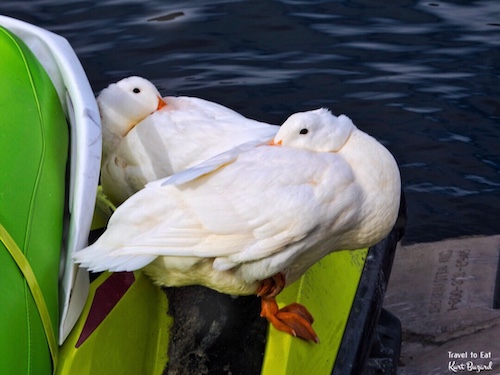
The American White Pelican may be thought of as a coastal bird, but they are often seen at certain times of the year in the lakes and rivers of the western and southwestern United States.
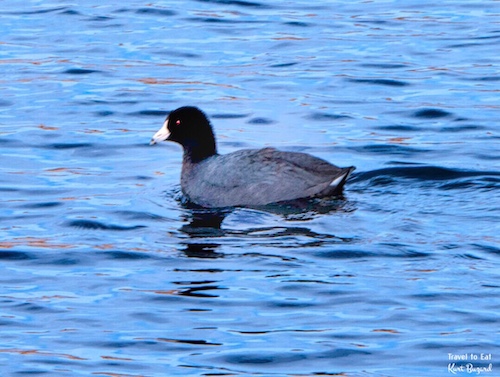
Coots are tough, adaptable waterbirds. Although they are related to the secretive rails, they swim in the open like ducks and walk about on shore, making themselves at home on golf courses and city park ponds. Usually in flocks, they are aggressive and noisy, making a wide variety of calls by day or night. They have strong legs and big feet with lobed toes, and coots fighting over territorial boundaries will rear up and attack each other with their feet. Often seen walking on open ground near ponds. In taking flight they must patter across the water, flapping their wings furiously, before becoming airborne.
Big Sky
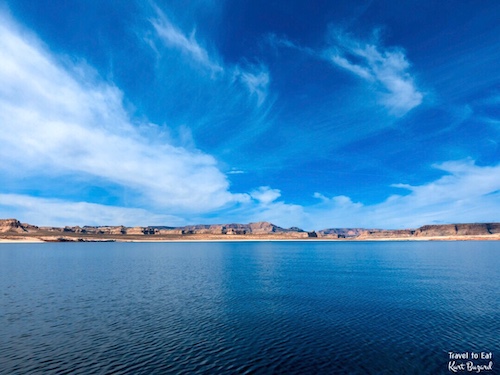
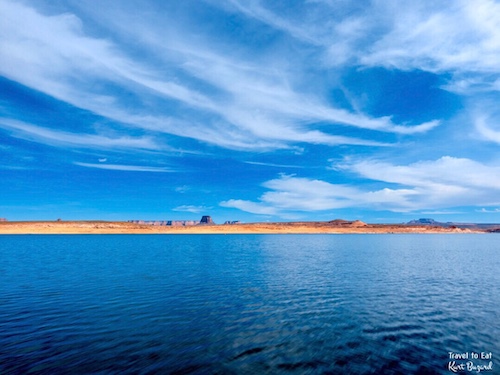
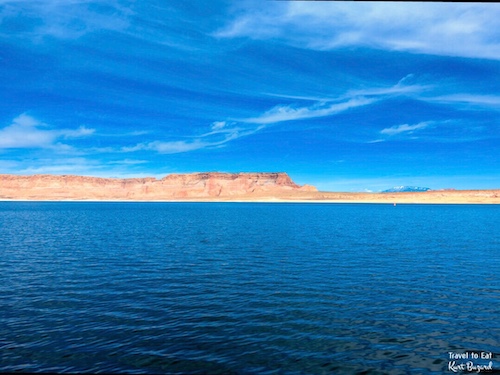
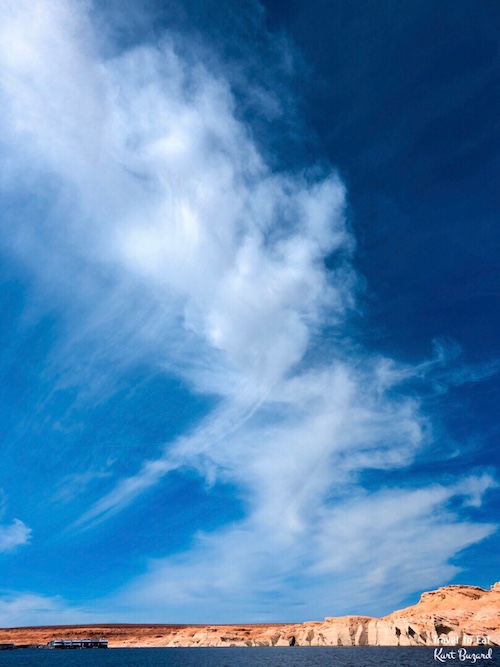
Montana is often cited as big sky country but I beg to differ. The Lake Powell sky is full of fanciful clouds, with water drawn from the large lake. Montana may have it’s charms but the miles of red sandstone formations topped by blue sky and clouds is undeniably beautiful. I hope you enjoyed the post, please leave a comment.
[mappress mapid=”218″]
References:
Antelope Point Marina: http://antelopepointlakepowell.com/
TripAdvisor: https://www.tripadvisor.com/Attraction_Review-g60834-d657689-Reviews-Antelope_Point_Marina_Village-Page_Arizona.html
Chaol Falls: http://www.wayneswords.com/index.php?option=com_content&view=article&id=85:hike-navajocanyon&catid=54:hikes&Itemid=15
Birds of Lake Powell: http://www.lakepowell.net/birdlist.html
American White Pelican: https://www.utahbirds.org/birdsofutah/BirdsA-C/AmericanWhitePelican2.htm
American Coot: http://www.audubon.org/field-guide/bird/american-coot
Sent from my iPad

